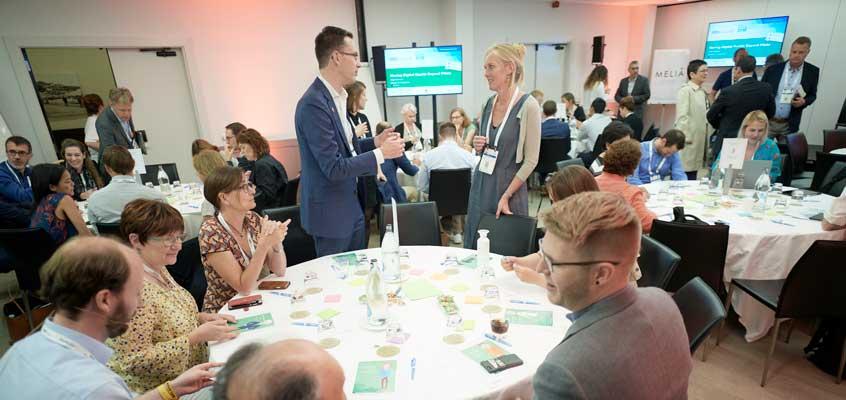nuestra
newsletter
Six proposals for a happy ending of healthcare pilots

Successful pilots that do not scale are a waste. A waste of time, resources and opportunities. Even worse, they have a negative impact as they demoralise those involved and make everybody sceptical of the idea of doing controlled implementations to test innovation.
Not sure if in other sectors it is as bad as it is in healthcare, but when too many pilots fail to turn into long-term paid implementations even when everything goes well, we are sending a bad message to the external world: ´it is hard to innovate in healthcare´. One potential consequence is that talents choose other sectors to apply their creativity, getting ourselves in a perverse cycle. More insights in my previous ‘death by pilots’ article.
So why successful pilots are not easily adopted and what can be done to improve the situation? These questions where tackled in a session at the HIMSS Europe & Health 2.0 Conference, where 60 participants put their brains together to make proposals for improvement. Seven top panellists first shared their views, and then attendees gathered at six roundtables to brainstorm, identify roadblocks and propose solutions.
Following are the top insights, in my view, that were exchanged:
Leadership is key: Every pilot should have an executive sponsor, ideally at the head of the organisation. The sponsor should facilitate an appropriate allocation of resources during pilot execution to increase the chances of adoption if the pilot is successful. It will also help to build trust about organisational commitment, especially when changes or issues happen (as they will).
Sustainability first: Rather than thinking of a pilot and then a potential acquisition, take a ´initial implementation´ approach that considers up-front what the project will look like at scale. That forces to consider availability of budget and delivery of value for all relevant stakeholders from the beginning of the project. It should also help to set up a joint problem-driven mind set, rather than somebody having a great idea that then vanishes.
Clear rules of the game: Jointly define what success means and, more importantly, what happens if pilot objectives are met. What is the commitment from decision makers if KPIs are met at the end of the testing phase? Who will take internal ownership afterwards and how it is going to be financed by the healthcare organisation? Other topics like Intellectual Property or financial benefits should also be agreed from the start. Do not launch a pilot expecting your customer will fall in love with your solution. You cannot postpone this negotiation. You would not survive the infamous post-pilot ´valley of death´.
More value, less technology: Some pilots are driven by technology (fascination) without having a clear value proposition for the healthcare organisation. Rather than selling the technology, digital companies should focus on the value that will be generated for all stakeholders involved. Once the value is clear, it will be easier to track relevant KPIs and get multi-level commitment across the organisation.
Know and engage your users: It is important to get stakeholders (healthcare professionals, management, IT and innovation departments, patients, etc.) involved, aligned and engaged from the very beginning to agree on the objectives: what they want, and what they want to avoid. That also helps identify primary users and blockers, understand what is critical for pilot success and generate trust. Then, periodic check-ins and fluid communications should help maintain the user community engaged. Actions to speedup user adoption (user-centred design, training, support) will promote sustained interest in the project over time.
Project management excellence: This point was frequently mentioned during the workshop. Adequate skill-sets and resources (especially time) are critical for success, together with a realistic project plan and timeline, and a clear distribution of roles and responsibilities.
It doesn’t look like rocket science, right? Then the question is: will we put these recommendations in practice? We can only blame ourselves forgetting the same results if we do not do things differently. Let´s cut the waste!
Jorge wants to thank Pascal Lardier from HIMSS Europe & Health 2.0 for supporting the idea and co-curating this session, as well as the panellists Bart Collet, Miguel Gonzalez, Pia Heikkurinen, Peder Jest, Tjerk Maas, Jan-Eric Slot and Casper Smeet for their outstanding contributions.

Comparte:
